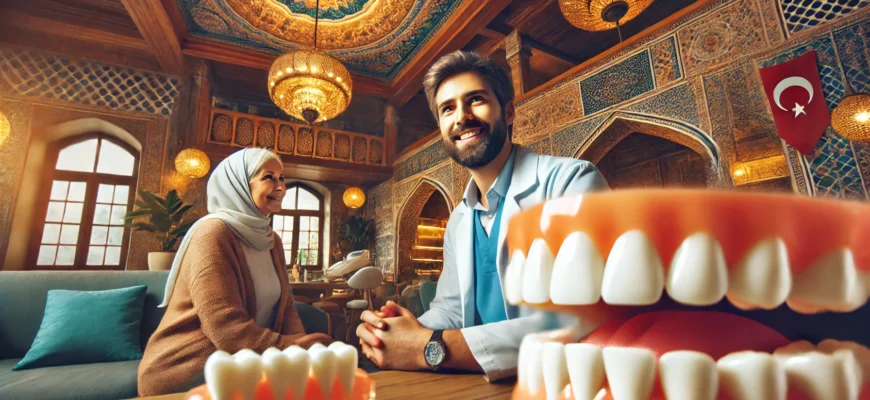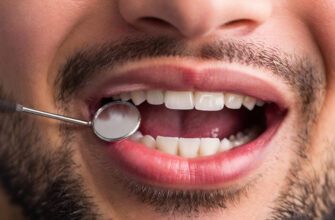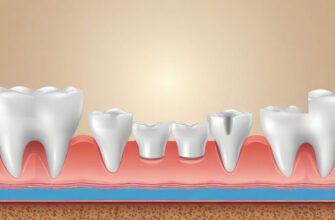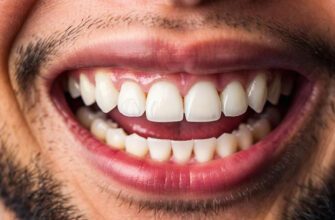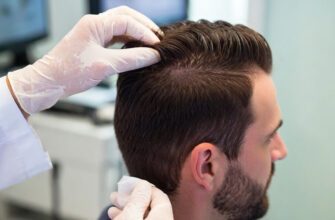- Everything You Need to Know About Prepless Veneers in Istanbul
- Benefits of Prepless Veneers
- Minimally invasive procedure
- Quick application process
- Reversibility of veneers
- Types of Prepless Veneers
- Lumineers
- DURAthin Veneers
- Other Available Options
- Candidacy for Prepless Veneers
- Ideal candidates
- Factors affecting candidacy
- The Procedure for Getting Prepless Veneers
- Initial consultation
- Preparation steps
- Application process
- Prepless Veneers vs. Traditional Veneers
- Differences in Procedure
- Aesthetic Outcomes Comparison
- Cost Considerations
- Cost of Prepless Veneers in Turkey
- Factors influencing cost
- Average pricing
- Why Choose Turkey for Prepless Veneers?
- Quality of Dental Care
- Experienced Professionals
- Cost-effectiveness
- What to Expect During Recovery
- Immediate post-application care
- Long-term maintenance
Everything You Need to Know About Prepless Veneers in Istanbul
Imagine achieving a beautiful smile without the extensive drilling or alteration that traditional veneers often require. Prepless veneers have emerged as a popular and innovative option for those seeking aesthetic dental enhancements, particularly in the vibrant dental market of Istanbul. This minimally invasive treatment offers a host of advantages to individuals looking for an improved smile without the commitment of permanent changes.
As dental technology evolves, so too do the options available to patients. Prepless veneers, such as Lumineers and DURAthin, present a sophisticated approach to cosmetic dentistry, designed to enhance smiles while preserving the natural tooth structure. The increasing popularity of this method highlights its appeal in a city renowned for its high-quality dental services, making it an attractive destination for those considering cosmetic work.
This article aims to provide a comprehensive overview of prepless veneers, exploring their benefits, application processes, candidacy requirements, and costs. Whether you’re contemplating a cosmetic makeover or simply curious about this dental innovation, understanding the ins and outs of prepless veneers can empower you to make informed choices about your dental health.
Benefits of Prepless Veneers
Prepless veneers, sometimes referred to as no-prep veneers, offer a significant advantage in cosmetic dentistry as they require minimal to no removal of tooth enamel. With a thickness comparable to that of contact lenses, between 0.2 to 0.5 mm, these dental veneers can be affixed directly onto the natural teeth. Offering a natural appearance and perfect smile, they are a less invasive alternative to traditional veneers. The conservative approach to prepless veneers means that patients can preserve their natural tooth structure while achieving a beautiful smile.
These dental solutions are excellent for addressing a range of aesthetic concerns such as stained teeth, chips, and minor misalignments. The intact enamel ensures that the natural strength of the teeth is maintained. Furthermore, since the procedure for applying these veneers does not involve the grinding down of the tooth surface, there’s typically no need for anesthesia — making it a largely pain-free and attractive option for those seeking cosmetic enhancements to their smile.
Minimally invasive procedure
Prepless Lamina treatments stand out for their minimally invasive nature, as they don’t necessitate the abrasion of teeth. This means the natural tooth structure remains intact, thereby maintaining the integrity of dental health. The veneers are bonded to the teeth using strong chemical adhesives that do not damage the existing dental material. As a result, the patient experiences minimal discomfort throughout the process. In comparison to regular veneers, the Prepless Lamina treatment can be completed more easily and much quicker, adding to patient comfort. The ultra-thin nature of these veneers allows them to blend seamlessly with the natural tooth structure, maintaining the natural smile design.
Quick application process
The journey to obtaining prepless veneers typically spans over 7 to 10 days, beginning from the initial consultation to the final bonding of the veneers. Initial evaluation plays a crucial role in determining the suitability of a patient for the treatment process. Measurements captured during the evaluation are utilized to design the veneers using advanced computer-aided technology. Thanks to special bonding techniques, the actual application process is efficient and less time-consuming as it bypasses extensive tooth shaping. Sometimes, temporary veneers may be provided during treatment preparation. In contrast to dental treatments like the dental crown or dental implants, prepless veneers can be applied with minimal tooth alteration, streamlining the process for a quick and non-disruptive treatment experience.
Reversibility of veneers
The reversible nature of prepless veneers represents a key benefit for many patients. Given that these veneers commonly do not require significant enamel reduction, they can often be removed if necessary. However, it is important to note that there are instances where slight enamel removal is needed to achieve the desired fit and aesthetics, potentiating the possibility of an irreversible procedure. By contrast, traditional veneers are largely irreversible, as they involve removing a substantial portion of enamel, permanently changing the tooth’s structure. It’s crucial for patients to have a consultation with a professional dentist to discuss the best course of action, especially in relation to individual dental needs and the potential for reversible veneers.
Types of Prepless Veneers
Prepless veneers, or no-prep veneers, represent a revolutionary advancement in cosmetic dentistry, offering smile transformations without the need for traditional enamel removal. These ultra-thin shells, crafted from materials like porcelain or composite, are applied directly onto the natural tooth surface, maintaining the integrity of natural teeth. Notably, distinguished brands such as Lumineers and DURAthin have made significant contributions to the prepless veneer market, each providing unique benefits and characteristics. Prepless veneers can typically be placed within a single dental appointment, streamlining the process to achieve beautiful smiles efficiently. They maintain the natural appearance of teeth, serving as an excellent option for those with aesthetic concerns who prioritize conservative dental treatments.
|
Brand |
Material |
Thickness |
Enamel Removal Required |
Typical Application |
|---|---|---|---|---|
|
Lumineers |
Porcelain |
0.3mm |
No |
Single Visit |
|
DURAthin |
Porcelain |
0.2mm |
No |
Single Visit |
|
Vivaneers |
Porcelain |
0.3mm |
No |
Single Visit |
|
Composite |
Composite Resin |
Varies |
Minimal |
Direct or Indirect |
Lumineers
Lumineers are an elite type of prepless veneer, renowned for their exceptional thinness at merely 0.3mm, substantially thinner than the standard 0.5mm thickness found in traditional dental veneers. These porcelain veneers are favored for their reversible nature, as no tooth enamel removal is integral to their application process, which significantly reduces the invasiveness of the procedure and potential discomfort for the patient. While Lumineers and other no-prep veneers may be mistaken for one another due to their similarities, it is essential to recognize Lumineers as a unique product by DenMat that stands out for its material properties. They cater to patients with aesthetic concerns, offering a pain-free route to a perfect smile, though their translucency may not always be suitable for those with severe dental discoloration.
DURAthin Veneers
DURAthin veneers are exquisitely handcrafted from porcelain and boast a remarkable thinness of about 0.2mm. This attribute underscores their placement among the thinnest veneers available, ensuring a natural appearance and feel. The design philosophy of DURAthin veneers embraces a no-prep approach, void of any enamel removal, thereby upholding the health and integrity of the tooth underneath. The treatment with DURAthin veneers represents a harmonious blend of enduring durability, capable of lasting approximately a decade, and aesthetic excellence, effectively concealing various dental imperfections. The non-invasive nature of the procedure translates to a more comfortable and appealing dental experience for those seeking cosmetic enhancements.
Other Available Options
Apart from porcelain-based prepless veneers, composite veneers act as a formidable alternative in the realm of tooth aesthetics enhancement. Available as direct or indirect applications, composite veneers are made from composite resin material, offering versatility and ease in the smile design process. While Lumineers, a special kind of prepless veneer, fall within a price range of £650-£1,600 per veneer, DURAthin and Vivaneers offer distinct options focusing on conservative smile improvements without the necessity of any tooth prepping. Vivaneers by Glidewell Dental are another variant of no-prep porcelain veneers, mimicking the same thickness level as Lumineers, aiming to procure a natural appearance without drilling. Traditional veneers call for a minor reduction of the tooth surface by about 0.5 mm but remain a valuable choice for individuals who might not be the best candidates for no-prep veneers. Each option serves specific dental health and aesthetic concerns, ensuring there’s a suitable veneer type for any potential patient.
Candidacy for Prepless Veneers
Prepless veneers have emerged as an excellent option for individuals looking to enhance the aesthetics of their smiles while maintaining the majority of their natural tooth enamel. These veneers are ideal for those who may have mild cosmetic dental flaws. This includes slight discoloration, small spacing issues, or minor misalignments, which can all be effectively addressed with this method. Unlike traditional veneers, the natural tooth structure remains largely intact, making the procedure potentially reversible.
It’s essential for candidates to understand that the translucency of prepless veneers means they might not be effective for teeth with significant staining. In such cases, a more traditional approach to veneers or alternative treatments might be suggested by dental professionals. Similarly, because these veneers add a slim layer to the existing teeth, it’s necessary for the profile of one’s teeth to be suitably close to the ideal shape to avoid issues with bulkiness or an unnatural appearance after the application.
For patients who prioritize the health and conservation of their natural teeth while seeking to correct aesthetic concerns, prepless veneers represent a respectful nod to the importance of dental health. Moreover, those contemplating future reversibility of the cosmetic procedure might find these veneers particularly appealing.
Ideal candidates
Prepless veneers cater to a certain segment of the patient population. They are particularly suitable for those who wish to minimize the amount of enamel removed from their teeth, offering a less invasive cosmetic dental option compared to traditional veneers. Moreover, patients who are happier with the natural appearance of their teeth and seek to maintain the integrity of their natural enamel will find prepless veneers align well with their values and dental priorities.
Furthermore, prepless veneers are favored by individuals considering the future reversibility of their dental enhancements. This method doesn’t require the filing down of the enamel which is a permanent change associated with regular veneers. The possibility of returning to the original tooth structure can be comforting and is often an influencing factor for those making the decision. Finally, ideal candidates are those who may have aesthetic concerns but do not require extensive restructuring for a beautiful smile. The high-quality materials, like porcelain or composite, used in prepless veneers offer durability and a cosmetic solution that doesn’t compromise on appearance.
Factors affecting candidacy
Determining candidacy for prepless veneers involves a comprehensive initial dental examination. This assessment conducted by a professional dentist is pivotal to establishing the overall dental health of the patient. It helps in understanding whether their cosmetic expectations can be met with this form of treatment. The condition and health of the patient’s enamel layer are of particular interest since prepless veneers are best suited for those with enamel that has not been heavily compromised.
In assessing suitability, the dental professional will take into account a variety of factors. These include the complexity of the patient’s dental issues, specific treatment goals, and their current oral health status. How a patient perceives the anatomical adequacy of their teeth can also prompt an exploration of prepless veneers. Personalized assessments, often aided by digital imagery or scans, are crucial for the precise customization of the veneers. This personalized approach ensures that the fit and design of the prepless veneers are in harmony with the patient’s individual dental structure and aesthetic aspirations.
The Procedure for Getting Prepless Veneers
The process of acquiring prepless veneers at a dental clinic in Turkey is a meticulous and patient-focused procedure, offering a minimally invasive route to enhancing aesthetic appearance and achieving beautiful smiles. Outlined below is the typical journey from initial consultation to the final application in acquiring these state-of-the-art dental restoratives.
Initial consultation
When embarking on the journey to obtain prepless veneers, the initial consultation is a cornerstone step. During this visit, a dental specialist conducts a comprehensive evaluation of the patient’s dental health and cosmetic desires. The condition and alignment of the natural teeth are assessed, as well as any additional dental treatments that may be necessary. To ensure the precise fabrication of the veneers, detailed dental impressions of the teeth are taken using wax and resin. Though the procedure is often pain-free, local anesthesia can be applied for those patients who require it. If the dental specialist deems it necessary, a dental cleaning may also be performed. This appointment sets the foundation for a smile design that is one with the patient’s unique dental structure and cosmetic aspirations.
Preparation steps
The preparation steps for no-prep veneers are designed to be straightforward and considerate of the patient’s natural tooth surface. Initially, an impression is captured to create an accurate blueprint of the patient’s dentition. Then, at the veneer placement appointment, the fit of the veneers is thoroughly checked and adjusted as needed to ensure perfect alignment with the natural teeth. For a secure and lasting bond, the teeth are gently etched, and an adhesion promoter, silane, is applied to the veneers. Required pre-treatment processes are minimally invasive and typically conclude within 2 to 3 dentist visits.
Application process
Once a patient is confirmed a good candidate for the treatment, the application process for prepless veneers begins with precise digital measurements of the teeth. These are used to tailor the veneers in a computer-aided design environment, ensuring a seamless and natural fit. Usually within a period of 7 to 10 days, the veneers are ready for application. After the patient’s approval of the veneers—an essential step to guarantee satisfaction—the dental professional proceeds with the final bonding using specialized techniques. The no-prep approach maintains the integrity of the natural tooth enamel and is typically painless, negating the need for anesthesia.
Throughout the process, from the initial dental impressions to the final bonding of the veneers, it’s the dental clinic’s priority to provide patients with a comfortable experience and to ensure their smile goals are met with precision. Prepless veneers stand as an excellent option for those looking to enhance their smile without the extensive tooth modification required by traditional veneers.
Prepless Veneers vs. Traditional Veneers
Prepless veneers offer a distinct alternative to traditional porcelain veneers, standing apart in terms of their minimal invasiveness. With a thickness comparable to that of contact lenses, typically between 0.2 to 0.3 mm, prepless veneers can be up to 0.5-0.7 mm thinner than the conventional variety which generally measures around 1 mm. This significant difference in thickness means that the application of prepless veneers usually doesn’t necessitate the removal of enamel, preserving the integrity of natural teeth, unlike traditional veneers that commonly require the reduction of approximately 0.5 mm of the tooth’s surface.
Traditional veneers are often perceived as thicker and less translucent in comparison to their prepless counterparts. This can affect the light-reflecting properties of the veneers and subsequently the natural appearance they provide. Additionally, both types go through a similar initial process involving an impression taken by the dentist which is then sent to a dental lab for the creation of the veneers; however, prepless veneers spare the patient from the substantial tooth preparation needed for traditional veneers.
Importantly, because prepless veneers are so conservative in their approach, they provide a potential option that can be reversed, as the underlying natural tooth structure remains largely undisturbed by the process. The removal or replacement of these veneers thus poses a much smaller risk to the patient’s dental health.
Differences in Procedure
When opting for the Prepless Lamina treatment, the procedure commences with an in-depth evaluation of the patient’s oral health, taking into account any unique requirements and expectations to curate a personalized treatment plan. The standout feature of prepless veneers is their no-enamel-removal application, offering a reversible option that preserves the natural structure of the teeth, something that traditional veneers cannot guarantee due to their need for enamel reduction.
The process includes an initial assessment, accurate digital measurements, taking oral impressions to customize the veneers precisely, and obtaining express patient approval before? the application of the veneers. These veneers are affixed firmly to the surfaces of the teeth through a chemical bond, formed after preparation in a cutting-edge, computerized setup using ceramic blocks. This ensures a strong attachment without harming the tooth enamel.
Typically, the Prepless Lamina treatment can be completed within one or two sittings at the dental clinic, with the veneers being ready to apply merely 6-8 days after the initial visit. This quick turnaround is much appreciated by patients who are often able to experience a transformational smile with minimal interference in their daily lives.
Aesthetic Outcomes Comparison
Prepless veneers, celebrated for their thin structure, have the potential to rival the aesthetic outcomes of traditional veneers, especially when the craft is performed by experienced dental professionals. While some practitioners argue that achieving satisfactory aesthetic results with prepless veneers can be more challenging due to their thinness, with in-depth dental knowledge and correct case selection, these concerns can be mitigated, leading to highly attractive outcomes.
Optimum results from prepless veneer applications are frequently dependent upon the preparatory orthodontic work that precedes the veneer placement. This step is critical to ensure the veneers align and fit seamlessly with the patient’s natural teeth. Modern materials, such as pressed ceramics like IPS Empress, allow for restorations as thin as 0.3 mm that can still deliver a pleasing aesthetic finish. Thus, even without aggressive enamel removal, skilled practitioners can use prepless veneers to address aesthetic concerns effectively, enhancing the teeth’s natural beauty.
Cost Considerations
One of the advantages of choosing Turkey for no-prep veneers is the cost savings. In Turkey, the price for a single no-prep veneer ranges from £150 to £300. This is a fraction of the cost in the UK, where prices per veneer are generally between £650 and £1,500. Notably, for patients requiring a full set of veneers, the expenses in Turkey can amount to £4,000 to £8,000 – a considerable markdown from the costs encountered in Western nations.
As an additional financial benefit, temporary veneers, often necessary during the prep stage of traditional veneers, are priced at about £90 to £150 in Turkey. Furthermore, many dental clinics in the country offer tailored veneer packages that incorporate additional perks such as transportation, lodging, and consultation services, frequently at more affordable rates than one might find elsewhere.
Overall, customers choosing to have their cosmetic dental needs met in Turkey can typically expect transparent pricing and cost-efficient dental solutions, paired with the assurance of professional dental care, that overall make it an attractive destination for those seeking beautiful smiles without breaking the bank.
Cost of Prepless Veneers in Turkey
Prepless veneers in Turkey are known for being substantially more affordable than in many Western countries. The average cost for one no-prep veneer ranges between £150 and £300, a figure that starkly contrasts with the UK, where prices sit between £650 and £1,500 for the same treatment. It is important to note the total price of no-prep veneers can be influenced by individual requirements, where factors such as medical background, doctors’ expertise, and the intricacies of the procedures demand consideration. The cost for a full set is estimated based on the number of veneers a patient needs, typically making the total expense to vary on a case-by-case basis.
For a point of comparison, traditional veneers in Turkey are priced slightly higher, starting at £200 and going up to £300. In contrast, traditional veneers in the UK range from £650 to £1,000. With the average price of a complete no-prep veneer treatment hovering around $4,023 in Turkey, the minimum and maximum prices range from $3,576 to $4,470, according to the level of service and clinic chosen.
Factors influencing cost
The cost of prepless veneers in Turkey is subject to several influencing factors. The material of the veneers plays a key role in determining the price, with premium-grade porcelain typically commanding a higher fee due to its durability and natural appearance. The number of veneers a patient requires also has a direct impact on the overall cost, as more units result in a higher expense. Additionally, the experience and reputation of the dentist performing the procedure can affect pricing, as more experienced dentists may charge a premium for their sought-after expertise.
Customized treatment plans, which consider the patient’s unique dental needs and aesthetic goals, will also reflect in varied pricing. The quality of the materials used and the need for supplementary dental treatments to accompany the veneers, such as treatment for gums or existing tooth decay, add to the total cost.
Many dental clinics in Turkey offer comprehensive packages that may include accommodation, transportation, and post-treatment care, contributing to the overall cost billed to the patient. Nevertheless, these packages are still often more cost-effective compared to single service rates in Western countries. Transparency in pricing and the highly competitive nature of the Turkish dental services market make it an attractive destination for those looking to manage their dental health economically.
Average pricing
Average Pricing of No-Prep Veneers in Turkey:
Turkey has become a popular destination for dental treatments, particularly for those seeking no-prep veneers. These veneers offer a less invasive option with a natural appearance, preserving the integrity of natural teeth. On average, the cost of no-prep veneers in Turkey stands at $4,023. The pricing scale varies from a minimum of $3,576 to a maximum of $4,470. In local currency, this translates to approximately £150 to £300 per veneer, offering a substantial cost advantage compared to UK prices, which range between £650 and £1,500 for a single no-prep veneer.
Traditional veneers in Turkey also present cost savings, with prices bracketed between £200 and £300, while UK prices are notably higher at £650 to £1,000 per veneer. The total cost for no-prep veneers in Turkey is determined based on various factors, including existing medical conditions, the qualifications of the treating dentist, and the complexity of the procedure. The lower costs in Turkey for such dental services make it an attractive option for patients considering cosmetic dentistry for their aesthetic concerns.
|
Type of Veneer |
Price in Turkey (GBP) |
Price in the UK (GBP) |
|---|---|---|
|
No-Prep Veneers |
£150 – £300 |
£650 – £1,500 |
|
Traditional Veneers |
£200 – £300 |
£650 – £1,000 |
Why Choose Turkey for Prepless Veneers?
Turkey is emerging as a global hub for dental tourism, particularly renowned for its advanced cosmetic dentistry services, which prominently feature prepless veneers. The nation is home to a wide network of dental clinics staffed with skilled dentists who provide top-tier services. When considering the pursuit of cosmetic dental enhancements, Turkey stands out for several reasons.
Quality of Dental Care
Turkish dental care is synonymous with quality and affordability. Patients who elect to undergo veneer procedures in Turkey can expect substantial savings while receiving treatments that rival or surpass those found in Western countries. Dental veneer treatments in Turkey, especially those like prepless veneers, are designed to be long-lasting, with an average lifespan of approximately 10 years, catering effectively to aesthetic needs such as correcting discoloration or chips. These veneers maintain the integrity of the tooth enamel and honor the natural aesthetic, with the added advantage of reversibility due to their minimal invasiveness. Clinics prioritize patient satisfaction with transparent pricing and a comprehensive suite of services that encompass every aspect of cosmetic dentistry.
Experienced Professionals
The high caliber of dental practitioners in Turkey is maintained through their affiliations with international dental associations and the acquisition of prestigious certifications. The country’s dental clinics are fortified with experienced specialists, proficiently employing advanced technologies and contemporary techniques. Patients are guaranteed an exceptional level of service and tailored attention from these adept professionals. Moreover, the competitive market for dental work in Turkey fosters a climate of continual professional growth and adherence to formidable standards, further augmenting the success rates of dental procedures, including those for veneers.
Cost-effectiveness
One of the key attractions of Turkey for dental treatments, particularly for no-prep veneers, is the significant cost-effectiveness when compared to other countries. The pricing for no-prep veneers in Turkey generally ranges between $3,576 and $4,470 per tooth, which is substantially lower than in the USA, where such treatments can be far more expensive. For UK-based patients, the potential savings are striking, with prices in Turkey for no-prep veneers starting at just £150-£300 per tooth, in stark contrast to the £650-£1,500 range in the UK. Traditional veneers in Turkey also offer a cost advantage, with pricing around £200-£250, emphasizing the country as a financially savvy choice for dental care. Dental clinics in Turkey, such as Snowdrop Premium Dental, set an example of affordability by offering porcelain veneers starting from just £135 to £185. These price points underscore Turkey’s position as a prime destination for those seeking high-quality dental care on a budget.
What to Expect During Recovery
The recovery process following the placement of dental veneers is generally smooth and less cumbersome than that of other dental procedures like dental implants or crowns. This period can vary slightly depending on whether patients opt for porcelain or composite veneers, with porcelain usually necessitating a slightly longer healing time. Additionally, the state of the patient’s dental health prior to the veneer application may influence the experience post-treatment.
Fortunately, the recovery phase is typically short. Patients can anticipate any minor discomfort or swelling to subside within just a few days post-procedure. To ensure a successful recovery, it’s critical for patients to adhere to the aftercare instructions provided by their dentist. This means that individuals can quickly return to their daily activities with minimal interruption.
Key to this stage is maintaining good oral hygiene and being mindful of dietary choices. It’s recommended that patients avoid foods and beverages that could potentially compromise the appearance or integrity of their new dental veneers, especially immediately following the treatment.
Immediate post-application care
In the immediate aftermath of veneer application, patients experience minimal disruption as they begin the healing process. Since veneers are bonded onto the front surface of the teeth—without any invasive procedures—recovery is typically straightforward.
Dentists will provide specific aftercare instructions to help maintain oral hygiene and preserve the longevity of the veneers. During the first two weeks post-application, it is prudent to avoid foods and drinks that have the potential to stain the veneers. Despite these temporary dietary restrictions, general oral hygiene practices, such as brushing and flossing, should be continued to maintain overall dental health.
Once veneers are affixed, dentists carefully shape and polish them to ensure proper alignment with the existing teeth and bite. This adjustment allows for comfort and functionality, integrating the veneers seamlessly with the patient’s natural teeth for an improved smile.
Long-term maintenance
With appropriate care and regular dental check-ups, no-prep veneers can be a long-lasting dental solution, offering up to 15 years of a radiant smile. Traditional veneers also have an impressive longevity, averaging around 10 years but potentially lasting up to 20 with consistent and diligent maintenance.
To maximize the lifespan of dental veneers, patients should follow the post-treatment care instructions provided by their dentist. This includes regular brushing, flossing, and routine dental check-ups. While no-prep veneers are designed to resist discoloration, patients should be mindful that the natural teeth underneath the veneers may still affect the overall aesthetics should they change in color.
The adherence to a dentist’s aftercare advice and commitment to oral hygiene practices significantly determines the endurance of dental veneers over time. Patients can ensure their new smile remains as perfect as the day the veneers were placed by sticking to their dentist’s recommendations and proper care techniques.

